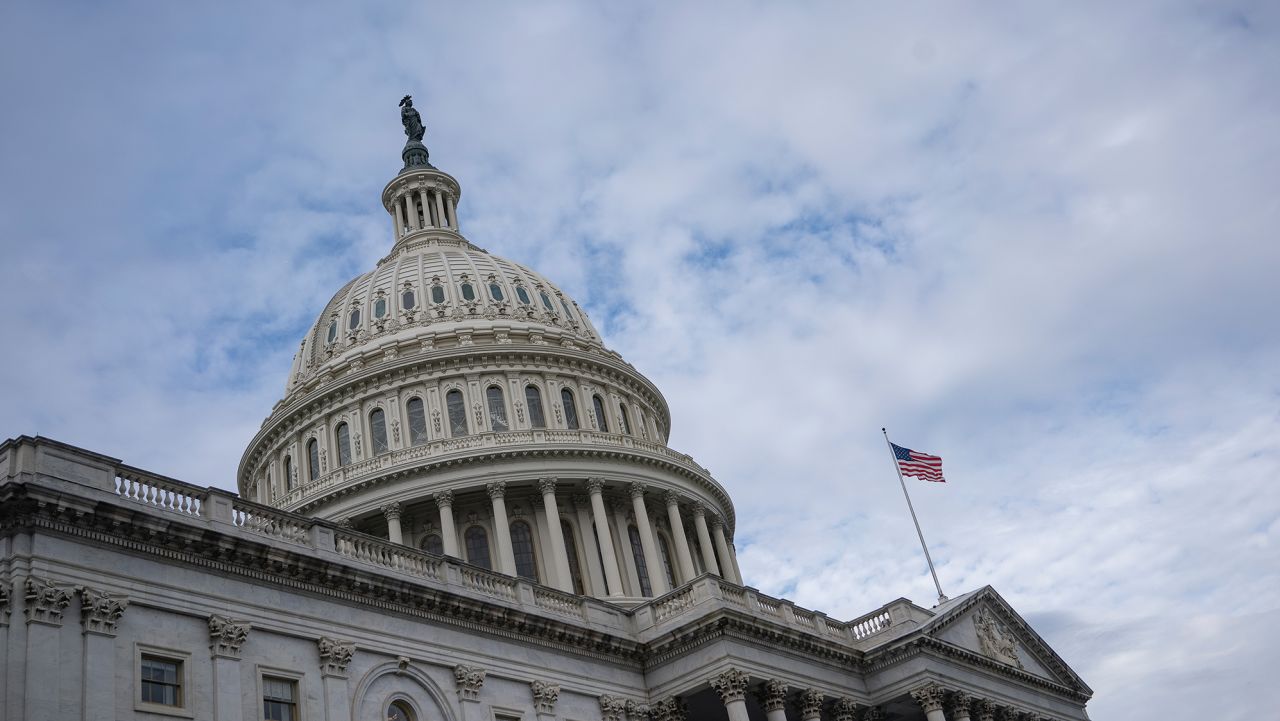George Washington is said to have told Thomas Jefferson that they should create the Senate to “cool” House legislation – like a saucer cools hot tea.
But using that notion of cooling what the House passes to outright kill a bill by filibuster is not in the US Constitution, and likely not what Washington had in mind.
In fact, early in American history senators did not use endless debate very much to obstruct legislation they didn’t like.
It wasn’t until the mid 1800s that more and more senators began to talk legislation to death that they opposed.
According to the official Senate.gov website, it started happening so much in the mid 19th century the term “filibuster” was born – derived from the Dutch word “freebooter” and the Spanish word “filibustros,” who were pirates raiding a Caribbean island at the time.
But there was no mechanism at all to overcome filibusters for the first century and a quarter of the US Senate.
It wasn’t until 1917 that a frustrated President Woodrow Wilson convinced the Senate to adopt a rule – known as RULE 22 – that allowed senators to vote to break a filibuster. It was, and still is, known as “invoking cloture.” (Fun fact: The first time the new rule was used was to try to overcome a filibuster of the Treaty of Versailles in 1919).
At first, the vote threshold to break a filibuster was a supermajority – 67 votes. But that was always hard to reach and became harder as the years went on, so in 1975 it was changed to 60 votes, which is where it stands today.
‘Relic of Jim Crow’
Southern senators took advantage of the filibuster for years to block civil rights legislation – including anti-lynching bills.
Sen. Strom Thurmond of South Carolina spoke for 24 hours and 18 minutes against the Civil Rights Act of 1957 in the longest uninterrupted filibuster in Senate History, according to Senate.gov.
It wasn’t until 1964 that senators finally overcame a filibuster to pass the landmark civil rights bill when former Senate Majority Leader Lyndon Johnson was President.
In 2013, then Senate Majority leader Harry Reid got so fed up with GOP obstruction on then-President Barack Obama’s judicial nominees, he led a major change so that presidential nominations only need a simple majority to be confirmed, which helped get more Obama judges on the bench. When Republicans took control of the Senate, they used the same 51-vote threshold to confirm a record number of conservative judges appointed by then-President Donald Trump.
What does ‘Talking Filibuster’ mean?
In recent years senators used the filibuster so much that the expectation is that most legislation will need 60 votes to pass, rather than a simple majority of 51 out of 100 senators.
It is now so baked in that Senate majority leaders tend to schedule so-called cloture votes to overcome the 60-vote threshold right away.
The “talking filibuster” that President Joe Biden said this week he could get behind would actually be more of a change in practice than Senate rules. It would force senators who oppose any given legislation to stand up and talk about it.
The idea is to make it more painful to wage a filibuster against a bill – to have more events like when Republican Sen. Ted Cruz of Texas talked for hours opposing Obamacare, in part by reading “Green Eggs and Ham,” or when Sen. Rand Paul, a Kentucky Republican, talked for 13 hours against the use of military drones.
But experts like former Senate Parliamentarian Alan Frumin say the “talking filibuster” probably wouldn’t do much to stop obstruction.
The reason: let’s say Republicans are filibustering HR1, the voting rights legislation that passed the House. If enough GOP senators are willing to talk they could take turns and go all through the night for days and days.
Plus, rather than act as a deterrent, the filibustering senators may see it as politically advantageous to make a show of their opposition to a bill. So, the process would change, but the result – legislation getting bogged down in the Senate with no end in sight – may not.



















